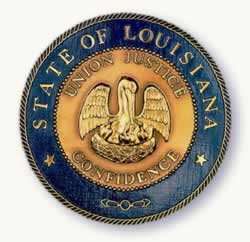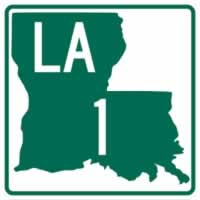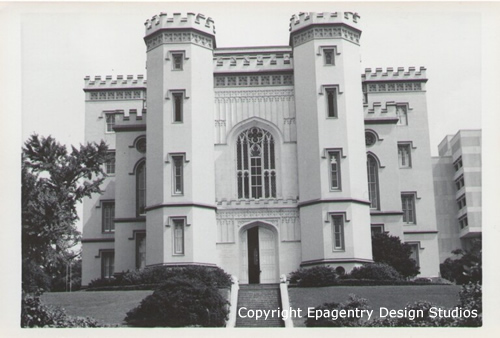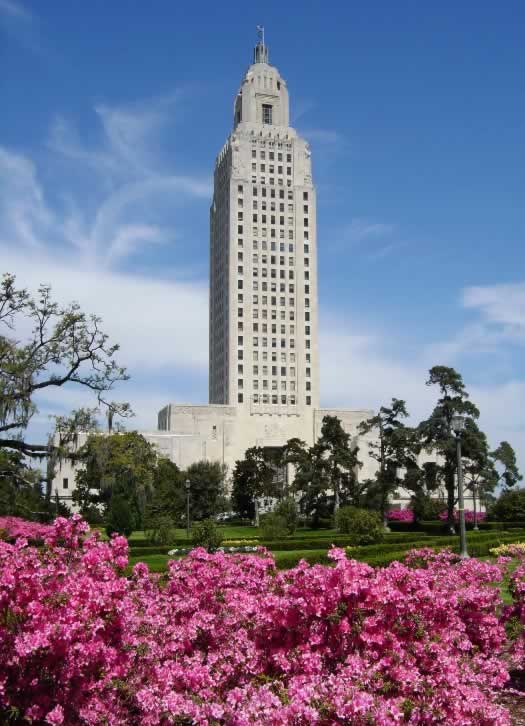
Facts About Louisiana
Louisiana: The Name
An early French explorer, Robert de LaSalle, named Louisiana for Louis XIV, King of France. It was admitted to the Union on April 30, 1812, as the 18th state. Its nickname is the "Pelican State".
Parishes ... Not CountiesLouisiana does not have "counties", but instead has 64 "parishes". It is bordered by Texas to the west, Arkansas to the north, Mississippi to the east and the Gulf of Mexico to the south. View more about Louisiana Parishes (counties) |
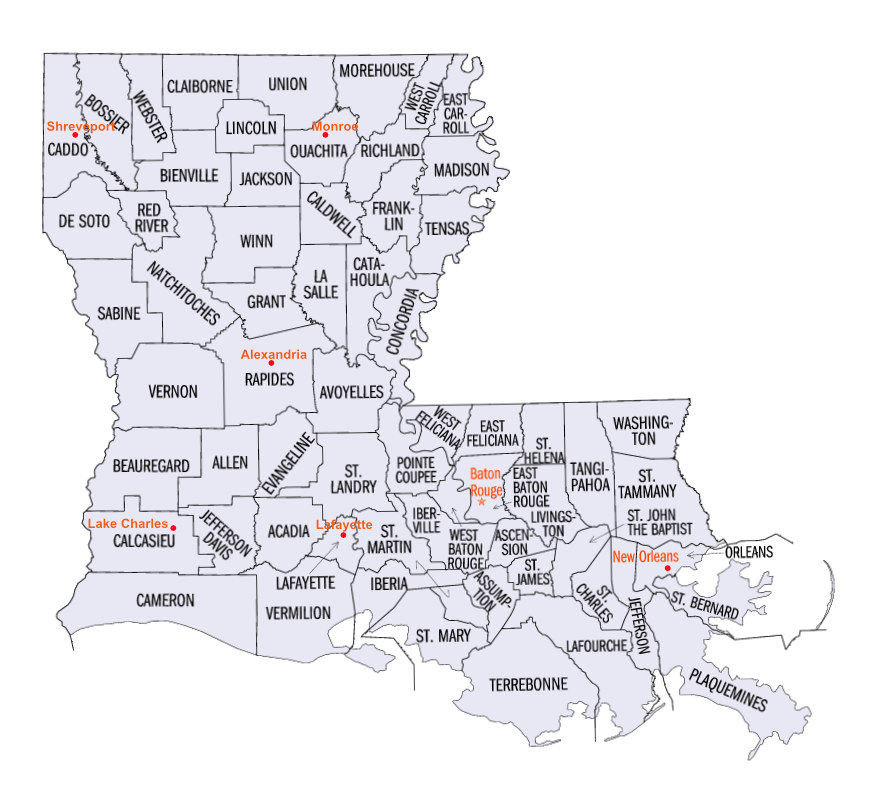 |
State Flag of LouisianaThe official flag of Louisiana has a solid blue background with the coat-of-arms of the state, the pelican feeding its young, in white in the center, with a ribbon beneath, also in white, containing in blue the motto of the state, "Union, Justice and Confidence". |
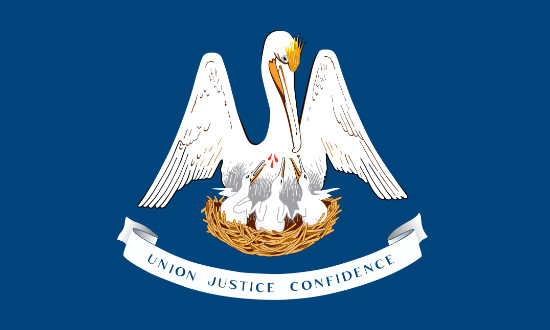 Louisiana State flag |
Government
The State Capitol is located in Baton Rouge. The Louisiana State Constitution of 1974 provides for 3 branches of government: Executive, Judicial, and Legislative.
The executive branch is headed by an elected governor, currently Jon Bel Edwards, and the Louisiana Legislature consists of the House of Representatives (105 members) and Senate (39 members). The Judicial branch is headed by the Louisiana Supreme Court.
The Governor's Mansion is located a couple of blocks east of the State Capitol building.
The State has two U.S. Senators, and six members of the U.S. House of Representatives.
Area & LocationLouisiana covers an area of 51,855 square miles. It is bounded by Texas to the west, Arkansas to the north, Mississippi to the east, and the Gulf to the south. The states of Arkansas, Louisiana, and Texas meet at the Ark-La-Tex Three States USGS Monument just north of Vivian, Louisiana. It is 31st among the states in size, and the 25th most populous. The highest point in the state is Driskill Mountain in Bienville Parish, with an elevation of 535 feet above sea level. PopulationLouisiana's population according to the 2020 Census was 4,657,757 residents. The most populous parish is East Baton Rouge Parish, followed by Jefferson Parish and Orleans Parish. |
Largest CitiesThe Louisiana capitol is in Baton Rouge, and the largest city is New Orleans. Other large cities include Shreveport, Lafayette, Lake Charles, Monroe, Alexandria, Bossier City, Houma and Kenner. View more about Louisiana Cities and Towns |
Seal of the State of Louisiana
|
Longest HighwayLouisiana Highway 1 (LA 1) is a state highway in Louisiana. At 431.88 miles, it is the longest numbered highway of any class in Louisiana. It runs diagonally across the state, beginning at Grand Isle on the Gulf, through Alexandria, and ending north of Shreveport in the Ark-La-Tex Region. |
|
Louisiana State Symbols
| Official Tree Bald Cypress 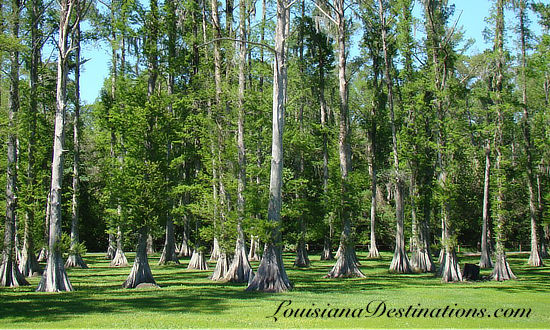 |
State Bird Brown Pelican  |
State Crustacean
|
State Reptile
|
Louisiana Amphibian - the Green Tree Frog
State Freshwater Fish - White Perch (also known as Sac-au-lait and White Crappie)
State Dog - Catahoula Leopard Dog
State Fruit - Strawberry
State Gemstone - Agate
The Old Louisiana State Capitol in Baton Rouge
On September 21, 1847, the City of Baton Rouge donated to the state of Louisiana a $20,000 parcel of land for a state capitol building, taking the seat of the capitol away from the City of New Orleans. The land donated by the city for the new capitol stands high atop a Baton Rouge bluff facing the Mississippi River, at the foot of North Boulevard. Construction took place between 1847 and 1852. The building is one of the most distinguished examples of Gothic Revival architecture in the United States. Designed by architect James Harrison Dakin, its floorplan, towers, exterior stained glass windows and gables give it the appearance of a 15th-century Gothic Cathedral. Dakin referred to his design as "Castellated Gothic" due to its decoration with cast-iron, which was both cheaper and more durable than other building materials used at the time. The building design was so unusual and distinctive that its romantic, medieval appearance earned the Old Statehouse ridicule from the famous author Mark Twain. A National Historic Landmark, the building was restored in the 1990s and now houses the Museum of Political History. |
|
The "New" State Capitol
The "New" Louisiana State Capitol was completed in March, 1932, in a mere 14 months, and stands on a 27-acre tract. Twenty-five hundred rail cars were needed to bring in the limestone used on the exterior and the interior marbles which came from distant places, including Vermont and Italy. The cost to complete the building was a modest $5 million. As the tallest state capitol in the United States, the building is 450 feet high with 34 floors. It is one of only four skyscraper capitols in the country and one of only nine capitol buildings that does not have a dome. The architects of the State Capitol used symbolism throughout the design of this towering building. As the square tower rises, it is cut away to an octagon at the 22nd floor. At this point four allegorical winged figures guard the corners, representing Law, Science, Philosophy and Art. Each figure is different, as are the views of the Capitol from differing angles. The 48 steps leading to the first floor bear the names of the fifty states in order of admission to the Union. The last step lists both Alaska and Hawaii. Because construction was completed before the two states were admitted, only one step was left, so both names were engraved on the 49th step alongside the state motto and “E Pluribus Unum”. The front steps symbolize the interdependence of the fifty states and welcome visitors from Louisiana, other states and the world. The House of Representatives is on the west side of the Capitol. The 105 member desks are made of solid American Walnut and Australian Laurel. One hundred desks date back to 1932. The remaining five were added in the 1960s due to an increase in membership. The 39-member Louisiana Senate has its chambers on the east end of the structure. |
| More Louisiana Information | ||
 |
 |
 |
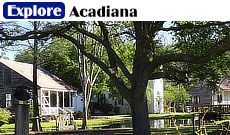 |
 |
 |
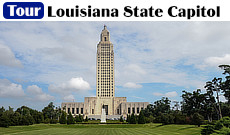 |
 |
 |
